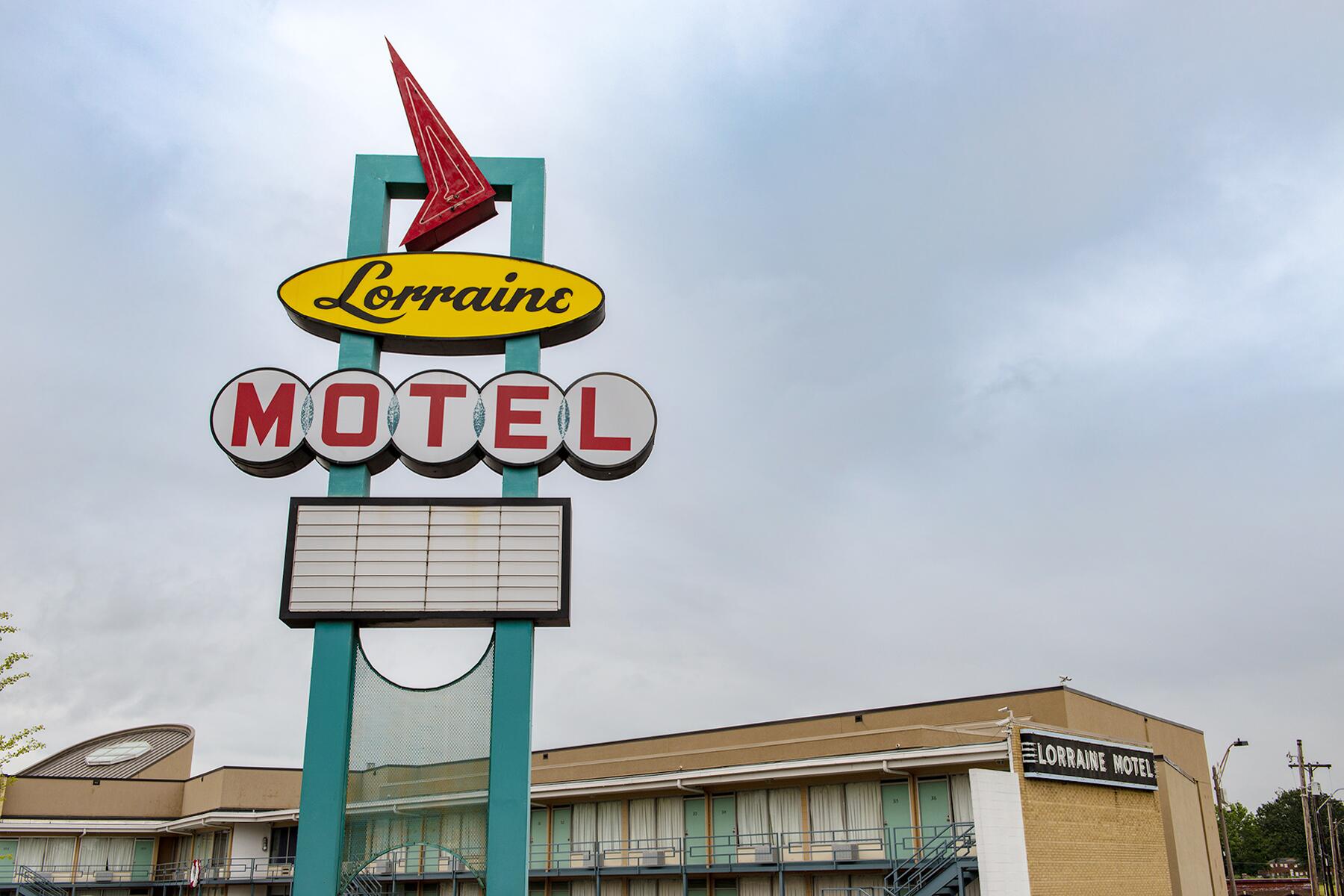Beyond beaches and theme parks, the Sunshine State has deep roots in African American culture and the Civil Rights movement.
Two hundred and sixty miles separate Fernandina Beach, in the northeastern corner of Florida, from Ft. Pierce midway down the state’s Atlantic seaboard. In between, surprising stories of Black history are everywhere to be found. Stories of exceptionalism. Stories of joy. Stories of individuals well–and little–known. The Sunshine State rarely receives recognition as a hotbed for African American culture, civil rights, or entrepreneurship. It’s time to change that.
Before Miami Beach, There was American Beach
Begin your exploration on Amelia Island where, in 1935, Florida’s first Black millionaire, Abraham Lincoln Lewis, established American Beach as a resort for Black people. What began as a playground for employees of his Jacksonville-based Afro-American Life Insurance Company evolved into a regional destination for Black people otherwise prohibited by segregation from enjoying beaches around the South.
“Recreation and relaxation without humiliation.” That was Lewis’ promise to visitors and they came by the thousands, turning American Beach into a bustling, mid-century paradise for Black pleasure seekers. What Miami Beach is today, American Beach was 70 years ago. Guests to American Beach were free to laugh, free to play, free to eat, free from racism, free from hostility, and free from the realities of wherever they came from.
Recommended Fodor’s Video
Hank Aaron came to American Beach. So did Joe Lewis. And James Brown. They ate at Black-owned restaurants. They stayed in Black-owned hotels. They listened to Ray Charles, Cab Calloway, and Duke Ellington play in Evans Rendezvous, a famed stop along the southern “Chitlin’ Circuit” of live music venues.
Hurricane Dora and the passage of the Civil Rights Act in 1964 brought an abrupt halt to the heyday of American Beach. Only slivers of what once was remain visible today. Evans Rendezvous stands condemned, waiting for a second life. Most prominently, visitors can still admire NaNa Dune, Florida’s tallest.

Like most of the rest of American Beach, NaNa Dune would likely have been lost were it not for the efforts of MaVynee Betsch, Lewis’ great-granddaughter. The “Beach Lady”–a former opera singer whose talent took her to Europe to perform–dogged public officials for years until the dune was protected.
American Beach is quiet these days, sometimes silent save for the squawk of a passing seagull or the hammer of construction crews putting up another mansion. The beach remains welcoming, however, and that quiet allows for the echoes of this place—the echoes of kids playing in the sand, the echoes of barbecue grills sizzling, the echoes of jazz music from Evans Rendezvous—to be heard when you listen close.
Find the “Harlem of the South” in Jacksonville
Less than an hour’s drive south from American Beach via scenic Florida State Road A1A, Jacksonville was not only home to A.L. Lewis, but Harlem Renaissance sculptor Augusta Savage and James Weldon Johnson. Johnson wrote the poem Lift Every Voice and Sing. His brother, John Rosamond Johnson, set it to music, its popularity growing to become known as “the Black National Anthem.”
The Cummer Museum of Art and Gardens in Jacksonville houses important sculptures by Savage. A mural depicting the artist’s Lift Every Voice and Sing sculpture commissioned for the 1939 New York World’s Fair, but never cast for posterity, can be seen at 229 North Hogan Street.

Find the mural adjacent to James Weldon Johnson Park downtown, the park having been renamed in 2020, dropping its former dedication to a Confederate soldier. A five-minute walk from James Weldon Johnson Park takes visitors to the minty-green, mid-century modern architectural gem that is the Jessie Ball duPont Center, which houses many of the city’s non-profit organizations. A dazzling mosaic mural completed in 2020 on the building’s exterior memorializes six African American dignitaries with ties to the area.
Before leaving Jacksonville, stop by the Ritz Theatre and Museum built on the site of the 1929 Ritz Theater movie house in the historic African American La Villa neighborhood. La Villa was known as the “Harlem of the South” during its peak of activity in the 1920s through 1960s. Today, the theatre still hosts performers while museum exhibits focus on Jacksonville’s Black and African American history, including “Bullet” Bob Hayes—the only athlete ever to win an Olympic gold medal and Super Bowl ring.
The Tragic Role St. Augustine Played in the 1964 Civil Rights Act
A side excursion to Atlantic Beach before making the short drive from Jacksonville to St. Augustine proves well worth the time with lunch at Voo-Swar Restaurant and Lounge (51 Roberts Street). Built by Earnest “Mr. E” Davis with his own hands and opened on a dirt floor a year before the Civil Rights Act was passed, Voo-Swar has been a focal point for the beach community’s Black residents ever since. Try the ribs and play a game of pool.
African American history in St. Augustine takes a sinister turn. When Black beachgoers were welcomed into the surf 70 miles north on American Beach in St. Augustine, Black beachgoers and activists holding “wade ins” were beaten with clubs by police officers.
The owner of St. Augustine’s Monson Motor Lodge infamously poured acid into his pool in order to force African Americans performing a “swim in” out of the water. Martin Luther King, Jr. was arrested on the front steps of the motel days before upon an attempt to enter. It was one of only three times he was ever arrested.
“The most lawless city I’ve ever been in,” is how King described St. Augustine at the time, adding, “I’ve never seen this kind of wide-open violence.” One day after the highly publicized “acid attack,” the Civil Rights Act of 1964 was approved following an 83-day filibuster in the U.S. Senate. It was an atrocity in Florida—not Alabama or Mississippi—which finally convinced the Senate to pass the historic legislation.
The Monson Motor Lodge is gone, but the steps upon which King was arrested remain. Find them inside the Hilton St. Augustine Historic Bayfront Hotel. King wasn’t the only Civil Rights activist to face violence in St. Augustine. Andrew Young, who would go on to become mayor of Atlanta, was sent there in the summer of 1964 to help organize protests. During one march he was beaten by a mob of white people. The spot where Young’s march came to an end, now known as Andrew Young Crossing, features bronze footsteps across a sidewalk with quotes from King, Young, and then-President Lyndon B. Johnson.
Daytona Beach, Vero Beach, and Ft. Pierce
Best known as the home of NASCAR and spring break, Daytona Beach was also the home of voting rights activist and educator Mary McLeod Bethune. Bethune first moved to Daytona Beach in 1904, establishing a girls’ school which would eventually merge with a boys’ school to become Bethune-Cookman University.

In her lifetime, she would serve as the highest-ranking African American woman in the U.S. government on Franklin Roosevelt’s “Black cabinet.” She was the only woman of color at the founding conference of the United Nations in 1945.
The Mary McLeod Bethune House on the campus of Bethune-Cookman was her primary residence until she died in 1955 and is now on the National Register of Historic Places.
Two hours south of Daytona Beach on Interstate 95, the most colorful aspects of Black history in Florida—both literally and figuratively—are found in Vero Beach and Ft. Pierce. Palm trees swaying on windswept beaches. Technicolor sunsets. Poinciana trees. This was the favored imagery of the Florida Highwaymen, an unaffiliated group of 26 painters, all Black, mostly self-taught, working in the Ft. Pierce area. The 25 men and one woman produced some 200,000 paintings during their heyday from the mid-1950s through the late 1970s.
Using artwork to avoid manual labor in Florida’s citrus orchards, the Highwaymen worked fast and priced cheaply. Theirs was a volume business, sometimes cranking out 20 or more paintings in a day and selling them door-to-door or from the trunks of their cars along U.S. Highway 1—hence the Highwaymen name.
R.A. “Roy” McLendon, one of the last original members at 89-years-old, can still be found painting most days between 11 a.m. and 3 p.m. at his small studio and gallery in the Vintage Vero building in downtown Vero Beach. The best place to see Highwaymen artwork is at Roger Lightle’s house, also in Vero Beach, which doubles as headquarters for his Highwaymen Art Specialists, Inc. Through 20 years of collecting and befriending Highwaymen artists, he has put together the preeminent collection of their work. Set up an appointment to see for yourself through the business’ website.
Ft. Pierce, one town south, has designated a Highwaymen Heritage Trail offering self-guided stops of local significance for the group. It has also established the Zora Neale Hurston Dust Tracks Heritage Trail.
Hurston was one of the most interesting characters in American history: author, anthropologist, Harlem Renaissance intellectual, life of the party. Best known for her novel Their Eyes Were Watching God, she also wrote, Dust Tracks on a Road, her autobiography.
Sadly, Hurston died destitute in Ft. Pierce. The Heritage Trail memorializes locations important to her time there, including her final residence (1734 Avenue L). Think not of that sad ending to Hurston’s life when following the Dust Tracks, rather, think about the Zora of her prime, laughing, dancing, partying with her 25-years-younger husband at American Beach. Oh yeah, she went there too.




